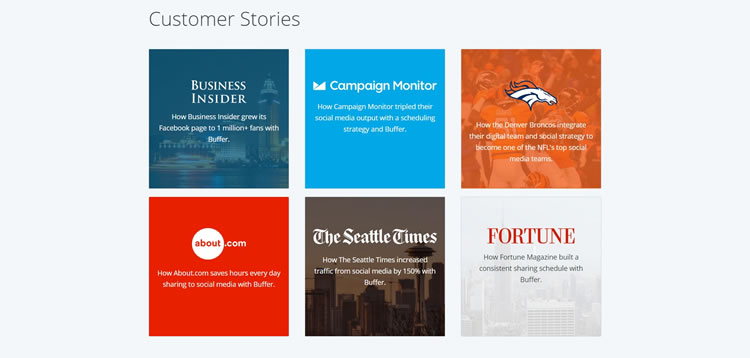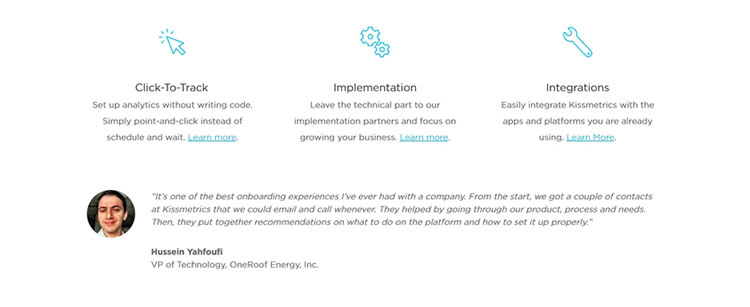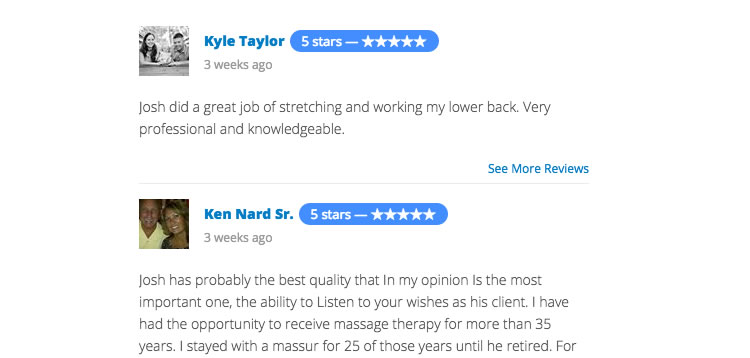In an article on Search Engine Land published early this year, Greg Gifford tears down testimonial pages, noting that: “Your testimonials page does nothing for you”.
Gifford has a point. Most testimonial pages do miss the mark, but this is simply because they are poorly constructed.
Testimonial pages are different than other pages. For most pages, whether it’s a homepage, contact, or about us page, you can just write pretty much anything you can think of. Just sit back and spew words, and it will be legit.
For testimonial pages, you actually need to do some leg work, and get other people, your users, to write about your product.
In this post I’ll show you how you can go about creating a successful testimonial page, and I’ll also talk about different testimonial page variations.
Testimonials – In or Out?
First of all I want to tackle the question: are testimonial pages a thing of the past?
Greg Gifford is not the only one badmouthing testimonial pages. These pages have been getting a bad rap lately, and some bloggers have suggested tossing them aside and using reviews on other platforms like Google Places, Facebook or Linkedin instead.
I believe having a testimonial page, or at least a testimonial section, is important, because it delivers the social proof at the most important stage, when the visitor is already on your site.
Beyond the Technical Side
In order to help make your testimonial page work, we are going to have to go beyond the mere technical creation of the page.
Basically, Gifford’s correct, your visitors don’t care much about what a bunch of strangers said about your site. This is because those strangers recommending you are not picked randomly, and do not constitute a random sample group.
You chose them, and therefore it is seen by your visitor that you have probably picked and chose only the positive reviews to put on your page.
Luckily, there’s a way to reaffirm the relevance of the testimonial, by placing testimonials that produce higher trust for the visitor.
Gaining this trust is a process. It includes different steps, from the choosing of the right people who will give the testimonial, to deciding where to place the testimonial on the page. Even though this post is about testimonial pages, we will also show the use of testimonials in homepages and in other variations, because these are also widely used.
Lets first examine which types of testimonial pages generate the most trust.
1. Placing Known Influencer Testimonials
Influencer testimonials are perhaps the most widely used testimonial variation. The reasons for its popularity is because these sort of testimonials are fairly easy to obtain, and they have great potential for making an impact on your visitors.
An influencer is an individual who has above-average impact on a specific niche process. Influencers are normal people, who are often connected to key roles of media outlets, consumer groups, industry associations or community tribes.

Chances are you have already created some sort of relationship with one or another of your industry’s influencers (and if you haven’t, you should). All you have to do is reconnect with them and ask them politely to send you a testimonial. More on how to write such an email later on.
If you can’t quite reach a known influencer you can also place a testimonial of someone less known, but who works for a known company. It doesn’t have quite the same effect, but still carries more trust.
Examples:
- https://ninjaforms.com/
- https://freemius.com/
- https://www.getresponse.com/
- https://warfareplugins.com/
2. Create a Story or Case Study Section
Stories and case study testimonials are very effective, but the downside is that they take a lot of time and money to produce, and thus are more widely used on bigger brand websites. This type of testimonial can span to a whole website section.
For each person or company that recommends a service or product, you need to create an in-depth article that will share the entire journey of your client, and how they benefited from working with you.

Because these testimonials don’t only focus on the final review of the client, and shows the entire working process, they are much more convincing than regular testimonials.
Examples:
3. The Testimonial Video Page
This is a variation of the stories testimonials that I just mentioned, and it takes even more effort to create, because it also involves scripting, filming and editing the video testimonial, including on-location interviews with your recommending clients.

Examples:
4. Video Testimonial – the Amateur Uncut Way
There is another option, to create simple video testimonials of real customers, without doing to much video editing, but I don’t think this type of testimonial is effective. I haven’t seen a good example of this kind of videos.
The video and audio quality is usually bad, and the person recommending the product or service usually fumbles to find words and doesn’t come across as genuine, even if they are sincere.
5. Fit the Testimonial with Your Marketing Message
This is a testimonial I started seeing more and more of. The idea is either to couple each feature with a testimonial, or arrange a number of testimonials to fit the advantages you want to convey to the potential client.

Examples:
- https://ninjaforms.com/
- https://www.kissmetrics.com/
6. Updated and Long List of Testimonials (with date/category)
For a broad service like 99 Designs, field specific testimonials can go a long way in showing the user the brand’s trustworthiness.
Their category and industry filter options lets you easily sift through hundreds of reviews, and find the one most relevant for your business vertical.

Examples:
7. Include a Social Embed
Because social platforms like Google and Facebook also have review systems, embedding a review feed on your site from these platforms can convince the user that the reviews are more reliable.
While I have not seen many examples of this testimonial page, there is a plugin that I found by SlickRemix that enables you to embed your reviews feed from Facebook. Haven’t tried it myself, but it looks promising.

A free plugin that does that is Kudobux, that pulls testimonials from Facebook, Twitter, Yelp, G+, Instagram and emails.
Examples:
One site that uses social testimonials exactly in the right time is WP-Rocket, that places a Twitter review right in the order page.
8. Testimonials with Rich Snippets
If you still want to go with the regular anonymous testimonials, make sure you include an image next to each quote. Having anonymous testimonials is bad enough, and the image serves to add some sort of trust to the page.
You should also build the testimonial page with rich snippets, so your page will be seen with the star rating on Google search results. The Schema themeis an example of this, showing 233 reviews that are also seen on Google.
eMail to Get the Testimonial
OK, so you’ve decided on the testimonial page you want. Now you need to get the actual testimonials. Make a list of friends, colleagues, acquaintances, clients, anyone that knows you and that can give a recommendation.
Now contact them, in a polite email that asks for the recommendation. Here is an example for a letter to an influencer that you spoke to in the past:
"Hi Paul, It been a month now since you last published your review of Elementor. You were so kind to publish it, and I am very pleased it reached 200 shares on Facebook. I wonder if I could ask you to write a few words about Elementor, to use on our testimonial page. If you could include what you think about the user interface that would be great. You are considered a highly professional authority in the WordPress community, so the review can really help us gain a larger userbase. I really appreciate your help, Thanks."
Summary
We’ve seen that there are various options to create testimonial pages. Some options, like the stories testimonial page, take longer to create. This however, is an effort well worth making, as your visitors are much more likely to convert into clients, leads or subscribers if they trust your brand.
Related Topics
Top